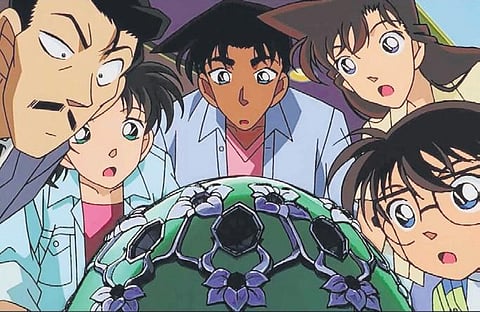

Japan creates an abundance of quality creative content that caters to a global audience in the form of films, video games, popular anime and literature. But Japanese films most often do not enjoy the popularity that Hollywood or K-pop savours in India.
What are the factors that impede the theatrical release of movies such as We Made a Beautiful Bouquet — a realistic love story with the potential to enjoy universal connect — in India? “While there is a niche audience that enjoys Japanese films, Indian film buffs are largely uninformed about our movies. That affects the supply side.
When there is demand, the suppliers will take it up, which is why we are trying to introduce quality films to the Indian audience,” says Koji Sato, the director general of Japan Foundation, Delhi. The Foundation is currently holding the Japan Film Festival in select theatres across India.
In Delhi, PVR Saket is hosting the festival, which will continue till Sunday. Ten films of different genres that open the window to the contemporary Japanese film scene, have been chosen for screening. “We wanted to introduce to India what the current generation of Japanese population is watching,” says Sato.
The list includes an introduction to Japanese anime, through three films of the Detective Conan series being screened tomorrow. Anime caters to almost 60 per cent of animation in TV content across the globe. Why is it so popular? “That’s because there is an abundance of serious content creators in the genre. It is a reflection of the Japanese society in general,” says Sato, “Before anime, there was manga.
We still have manga. If you are in Japan, you see adults creating or absorbing them in the metros, buses, in public spaces. The creators include students, housewives... and it is not just a hobby for them, they are seriously into it. This availability is what translates to the popularity of anime,” says Sato. While the Indian television industry is not bereft of Japanese anime, the influence is not a one-way street.
The island nation has a huge craze for Indian films. One of Japan’s first exposure to Indian films was through the films of Indian auteurs like Satyajit Ray. In the 1980s, due to the strong ties between the two countries, at a festival on culture, some Indian entertainers piqued the interest of Japan. In 1998, some people realised the marketability of Indian films.
They screened Muthu, a Rajnikant movie, which became a big hit, especially in Tokyo. But later, the industry was hit by a roadblock of rights clearances, and there was a lull. “But there is new hunger for Indian films in the current generation.
Not just for Bollywood movies in the song-and-dance format but for good movies like Lunch Box. However, the admiration is largely for Tamil movies. And recently, for Telugu films. Films like Bahubali and RRR have intrigued Japanese audience because the themes in these films were beyond their imagination. Hopefully, this time the trend will stay,” adds Sato.